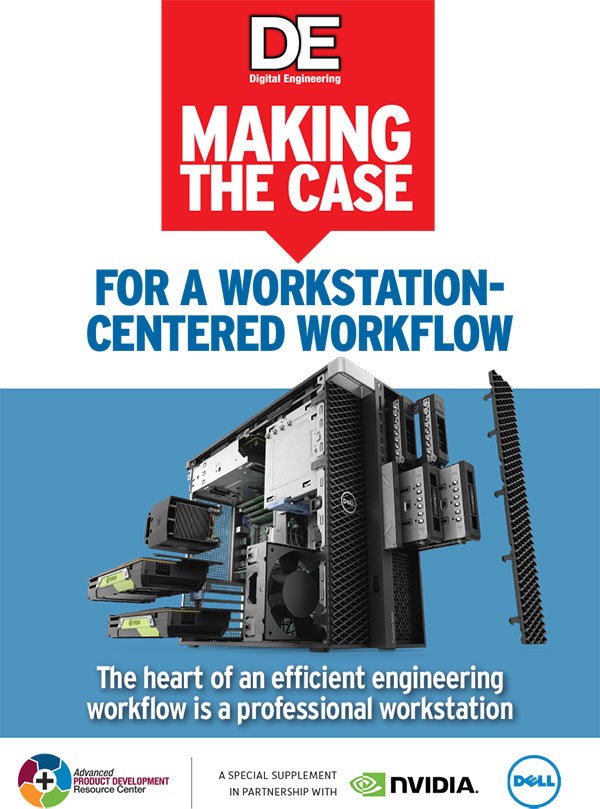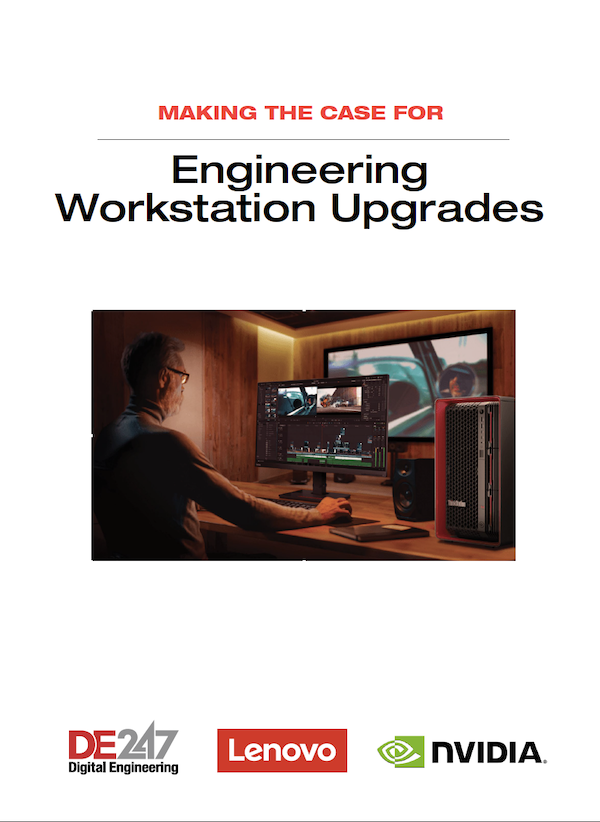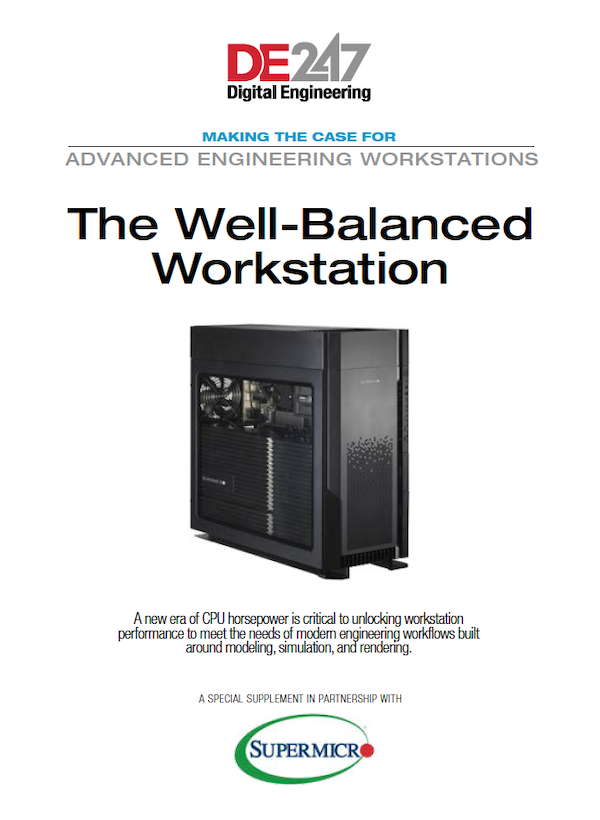Maintain Your Engineering Core
Make the case for a professional workstation, the heart of an efficient engineering workflow.

“Making the Case for a Workstation-Centered Workflow” argues that the flexibility, power and cost of professional workstations make them the ideal computing solution for engineering workflows that involve rapid design iteration, simulation, visualization, rendering and VR.
Latest News
March 5, 2019
Dear DE Reader,
If the powers that be have decreed that you should integrate more upfront simulation, rendering and visualization—or even virtual reality—into your workflow to keep pace with the complexities of modern design engineering, they're probably right. If they've made that decree without investing in the hardware you need to support an efficient engineering workflow, you're probably frustrated. “Making the Case for a Workstation-Centered Workflow,” a special supplement by the editors at DE in partnership with Dell and NVIDIA, was created to ease those frustrations by helping you better inform the powers that be.
In just 10 pages, complete with helpful graphics and stats, the paper acknowledges the benefits of a modern engineering workflow that relies on immersive visuals, but doesn't mince words on the chicken-and-egg computing hardware/software dilemma. Spoiler alert: The hardware comes first. But what hardware?
“To support the increased digitization efforts, design engineering teams need computing solutions that can handle the load,” according to the paper. “However, the hardware side presents a confusing array of options, including mobile and desktop workstations, local clusters, data centers and cloud computing resources. Added to the choices are CAD and simulation software tools that are now offered via subscription/cloud models. Each option has benefits and drawbacks.”
The paper goes on to explain the pros and cons of today's computing options. As the title more than implies, “Making the Case for a Workstation-Centered Workflow,” makes the argument for workstations maintaining their place at the heart of design engineering, but this isn't a hatchet job on other computing options. In fact, the paper recommends a hybrid computing approach with workstations acting as the flexible, powerful hub of engineering activity. Powerful—thanks to the latest graphics processing units, faster solid-state drives and plenty of memory—but not much more expensive.
To support its argument, the paper includes a detailed return-on-investment (ROI) calculation for a typical employee doing design engineering work on an older workstation. The math is shown, making it easy to plug your own salary and design workload percentages in to customize your actual ROI. The paper's conservative estimate on the time it would take a professional engineering workstation to pay for itself via increased productivity? About 6 weeks.
“Making the Case for a Workstation-Centered Workflow” uses compelling graphics and stats throughout to benchmark workstation upgrade speed boosts and show how real-world companies have increased their productivity by embracing the idea of a workstation-centered design engineering workflow. It tailors arguments to executives, engineering managers and IT managers to give you some insights on their perspectives. It also provides plenty of links to additional resources. In short, it helps you communicate the causes of your computing frustrations and plots out a path to rectify them. Download your copy today.
More Dell Coverage

More NVIDIA Coverage
Subscribe to our FREE magazine, FREE email newsletters or both!
Latest News
About the Author
DE’s editors contribute news and new product announcements to Digital Engineering.
Press releases may be sent to them via DE-Editors@digitaleng.news.







